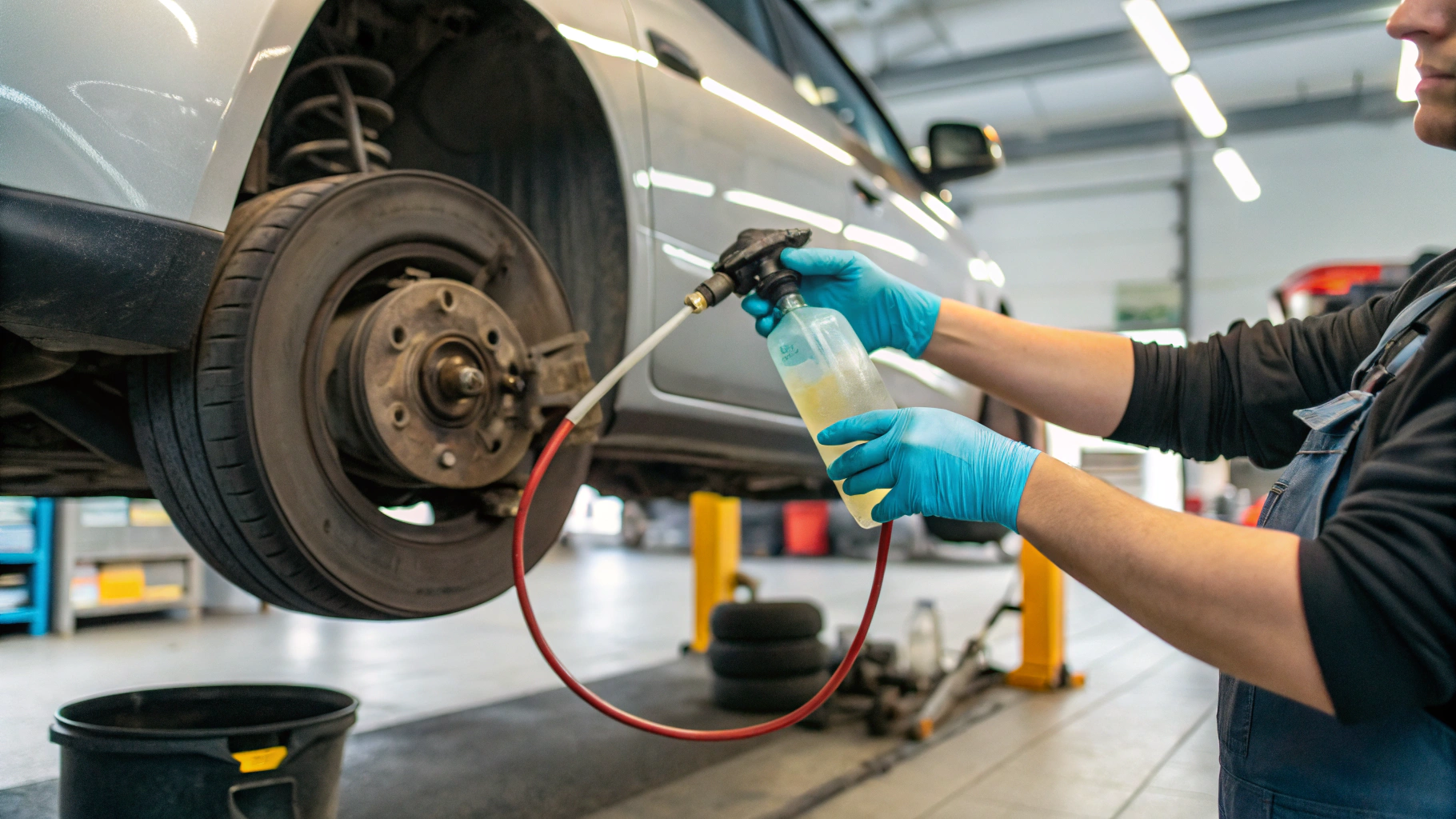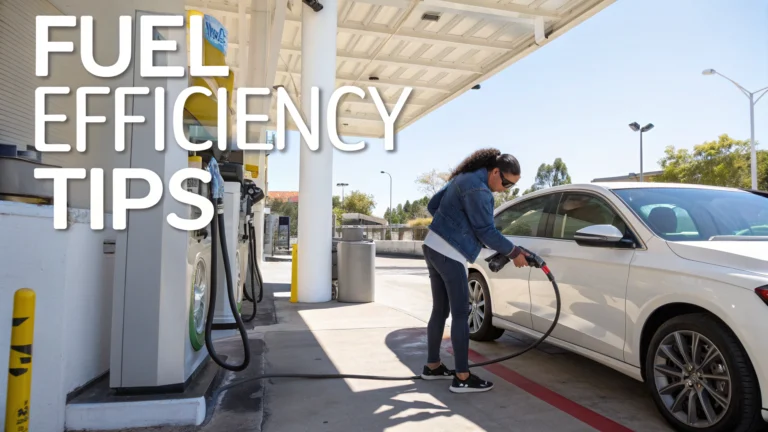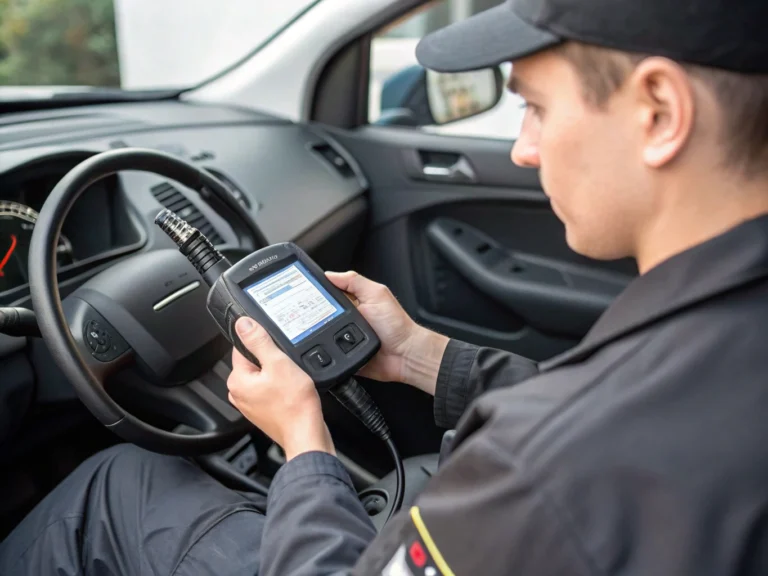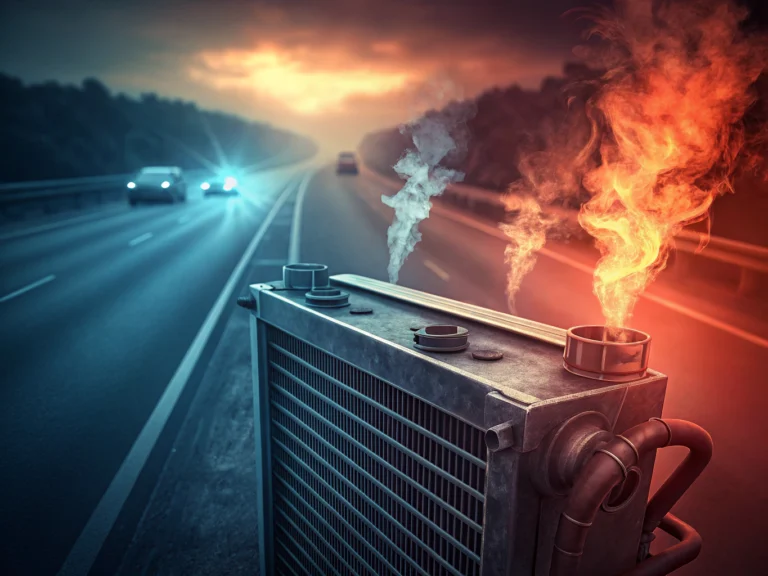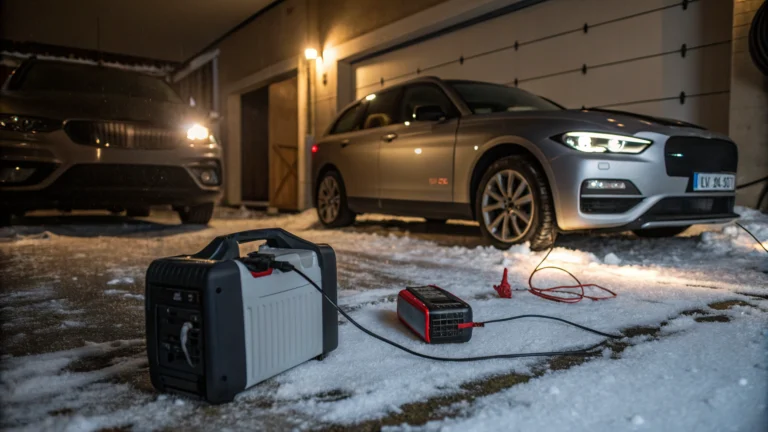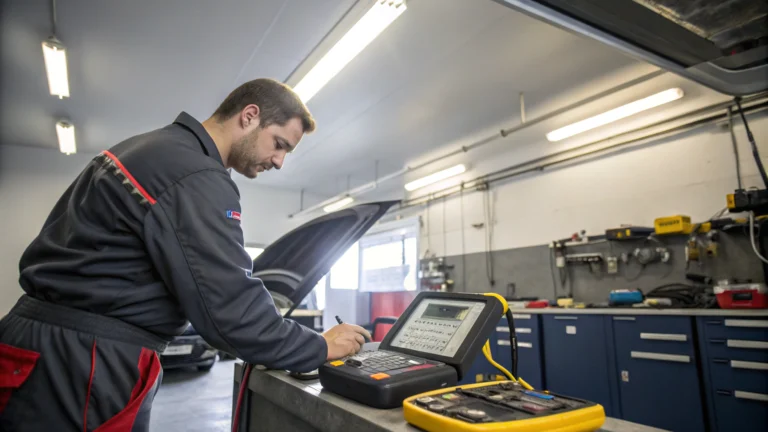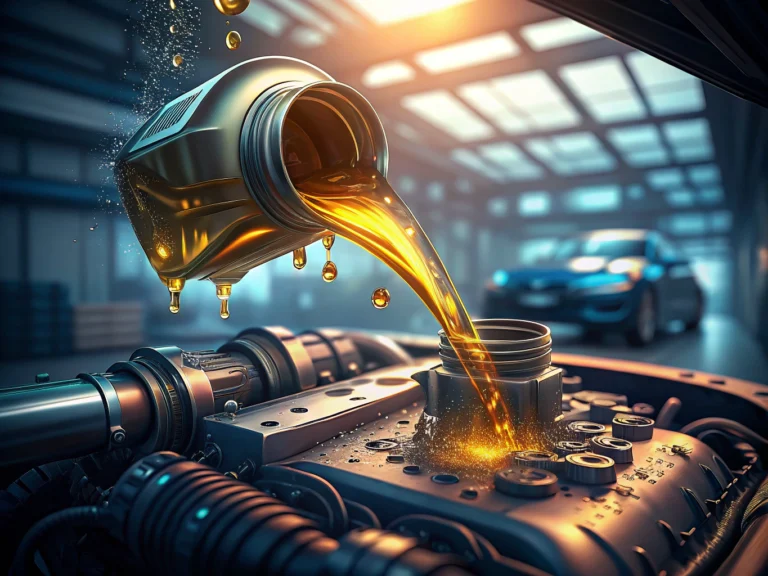Brake Fluid Flush: Essential Guide With Cost-Saving Tips
Table of Contents
Maintaining your vehicle is crucial for ensuring safety and efficiency, and a brake fluid flush plays an important role in this process. Regular brake fluid maintenance can prevent costly repairs and maintain optimal braking performance.
The brake fluid flush is a key aspect of vehicular care, essential for the long-term performance and safety of your car. Understanding the intricacies of when and why to perform a brake fluid flush will help you keep your braking system in top condition.
Brake Fluid Flush Cost Breakdown
When planning for vehicle maintenance, understanding the brake fluid flush cost helps you budget appropriately. The brake fluid change cost varies depending on several factors, including your vehicle type, location, and whether you choose a dealership or independent shop.
The average flush price for brake fluid typically falls between $70 and $150. Luxury vehicles and larger vehicles may be on the higher end of this range. This price usually includes the brake fluid itself and the labor to perform the flush. Some shops might also include a brake system inspection as part of the service.
Here’s what typically affects the brake fluid flush cost:
- Vehicle make and model – European and luxury vehicles often cost more
- Type of brake fluid required (DOT 3, DOT 4, or DOT 5.1)
- Geographic location – metropolitan areas tend to have higher prices
- Service provider – dealerships generally charge more than independent shops
Many service centers offer brake fluid flushes as part of maintenance packages, which might provide better value than purchasing the service individually. Some shops also run promotions on brake service throughout the year, which can reduce the overall cost.
Is a Brake Fluid Flush Really Necessary?
Many vehicle owners wonder whether a brake fluid flush is an essential part of car maintenance or just an unnecessary expense. The answer is clear: brake fluid flushes are indeed necessary for the long-term performance and safety of your vehicle.
Brake fluid is hygroscopic, meaning it absorbs moisture from the air over time. This moisture contamination can lead to several problems:
- Reduced boiling point, which can cause brake fade during heavy braking
- Corrosion within the brake lines and components
- Deterioration of rubber components in the brake system
- Compromised brake pedal feel and responsiveness
Most vehicle manufacturers recommend a brake fluid flush every 2-3 years or 30,000 miles as part of regular brake service. Following this maintenance schedule helps ensure your braking system remains effective and prevents costly repairs down the road.
Signs that indicate your brake fluid needs changing include:
- Dark or cloudy brake fluid (fresh fluid is typically clear with a slight amber tint)
- Spongy brake pedal feel
- Reduced braking performance
- ABS warning light illumination
Regular brake fluid maintenance is particularly important if you frequently drive in mountainous areas, tow heavy loads, or subject your vehicle to performance driving – all situations that create additional heat in the braking system.
DIY Brake Fluid Flush Tips
If you’re mechanically inclined and looking to save on maintenance costs, you might consider performing a brake fluid flush yourself. While this can save you money on labor costs, it’s important to understand that brake system work requires attention to detail and proper safety procedures.
Before deciding to replace brake fluid yourself, consider these factors:
- You’ll need specific tools, including a brake bleeder kit or vacuum pump
- The correct grade of brake fluid for your vehicle is essential
- Working with brake systems requires preventing air from entering the system
- Brake fluid is corrosive and requires proper handling and disposal
If you decide to proceed with a DIY brake fluid flush, here’s a simplified overview of the process:
- Gather necessary tools and the appropriate brake fluid type
- Locate and open the brake fluid reservoir
- Remove old fluid from the reservoir
- Fill with fresh fluid
- Bleed the brake lines at each wheel, starting with the wheel farthest from the master cylinder
- Continue until clear fluid emerges at each bleeder valve
- Top off the reservoir to the proper level
Remember that improperly performed brake work can lead to brake failure, so if you’re uncertain about your abilities, it’s better to leave this maintenance to professionals. The money saved through DIY might not be worth the risk if you lack experience with automotive brake systems.
For those who do proceed with DIY brake fluid maintenance, make sure to properly dispose of used brake fluid according to local regulations, as it’s considered hazardous waste in most areas.
The Bottom Line on Brake Fluid Flushes
Whether you choose professional service or a DIY approach, maintaining your brake fluid is an essential aspect of vehicle care. Regular brake fluid flushes help ensure your braking system remains responsive and effective, potentially preventing more expensive repairs and, most importantly, keeping you safe on the road.
By understanding the costs involved, recognizing the importance of this maintenance procedure, and weighing your DIY capabilities, you can make informed decisions about your vehicle’s brake fluid maintenance. Remember that when it comes to braking systems, proper maintenance isn’t just about saving money—it’s about ensuring the safety of you and your passengers.
As an Amazon Associate we earn from qualifying purchases.
Regular maintenance of your vehicle, including a brake fluid flush, ensures that your car operates at its best and saves you from unexpected repairs. It’s a small investment for peace of mind on the road.
Understanding the importance of a brake fluid flush helps car owners make informed decisions that enhance their vehicle’s reliability and safety, providing confidence in their car’s braking system performance.
Shop Related Products:
- Find brake fluid on Amazon
- Find brake bleeder kit on Amazon
- Find brake fluid tester on Amazon
- Find power bleeder on Amazon
- Find funnel on Amazon
Frequently Asked Questions
How much does a brake fluid flush cost?
The cost typically ranges from $70 to $150 depending on the vehicle and service location.
Is a brake fluid flush really necessary?
Yes, over time brake fluid absorbs moisture, which can reduce braking efficiency and damage components.
Can I flush brake fluid myself?
It’s possible for experienced DIYers, but it requires proper tools and brake system knowledge.
